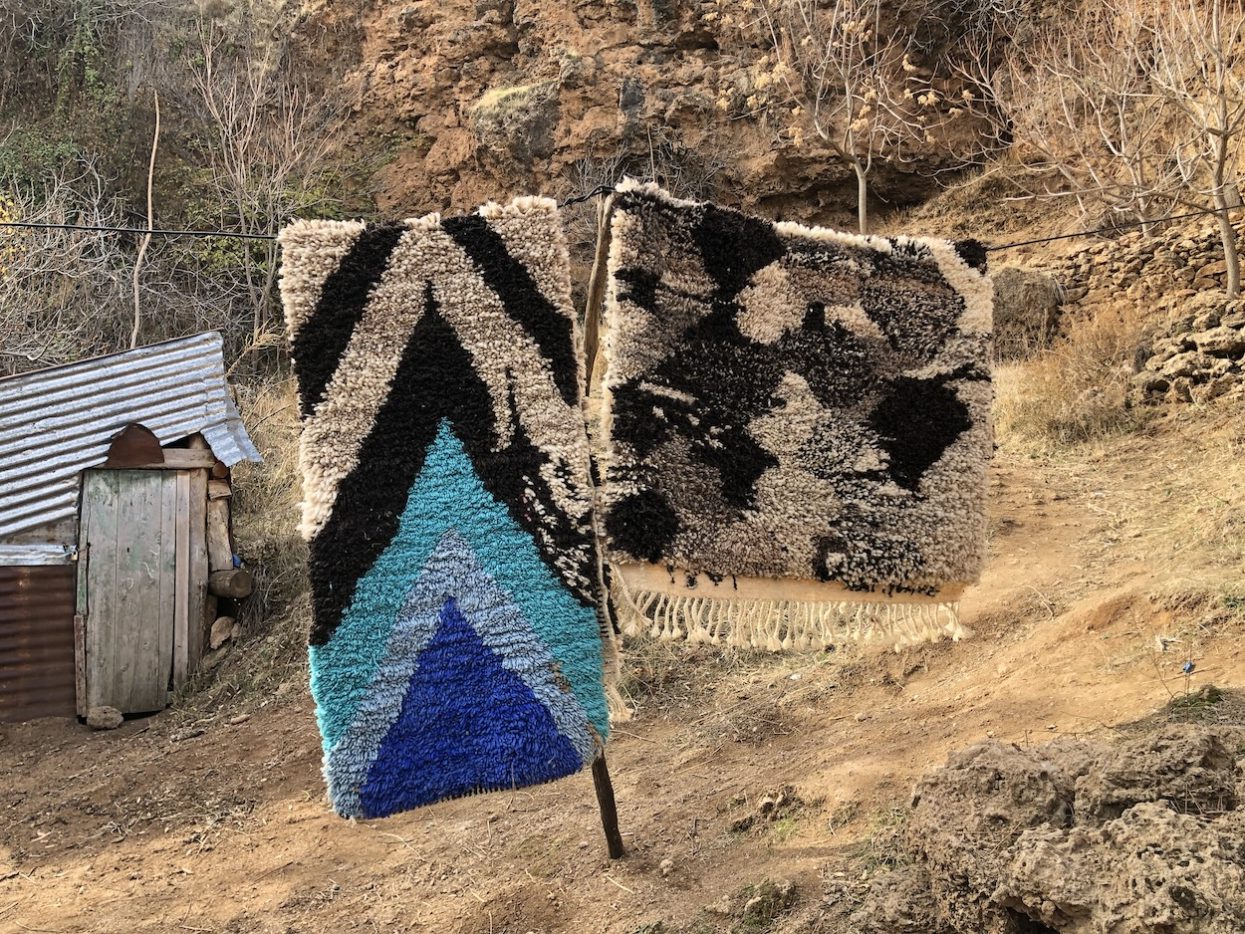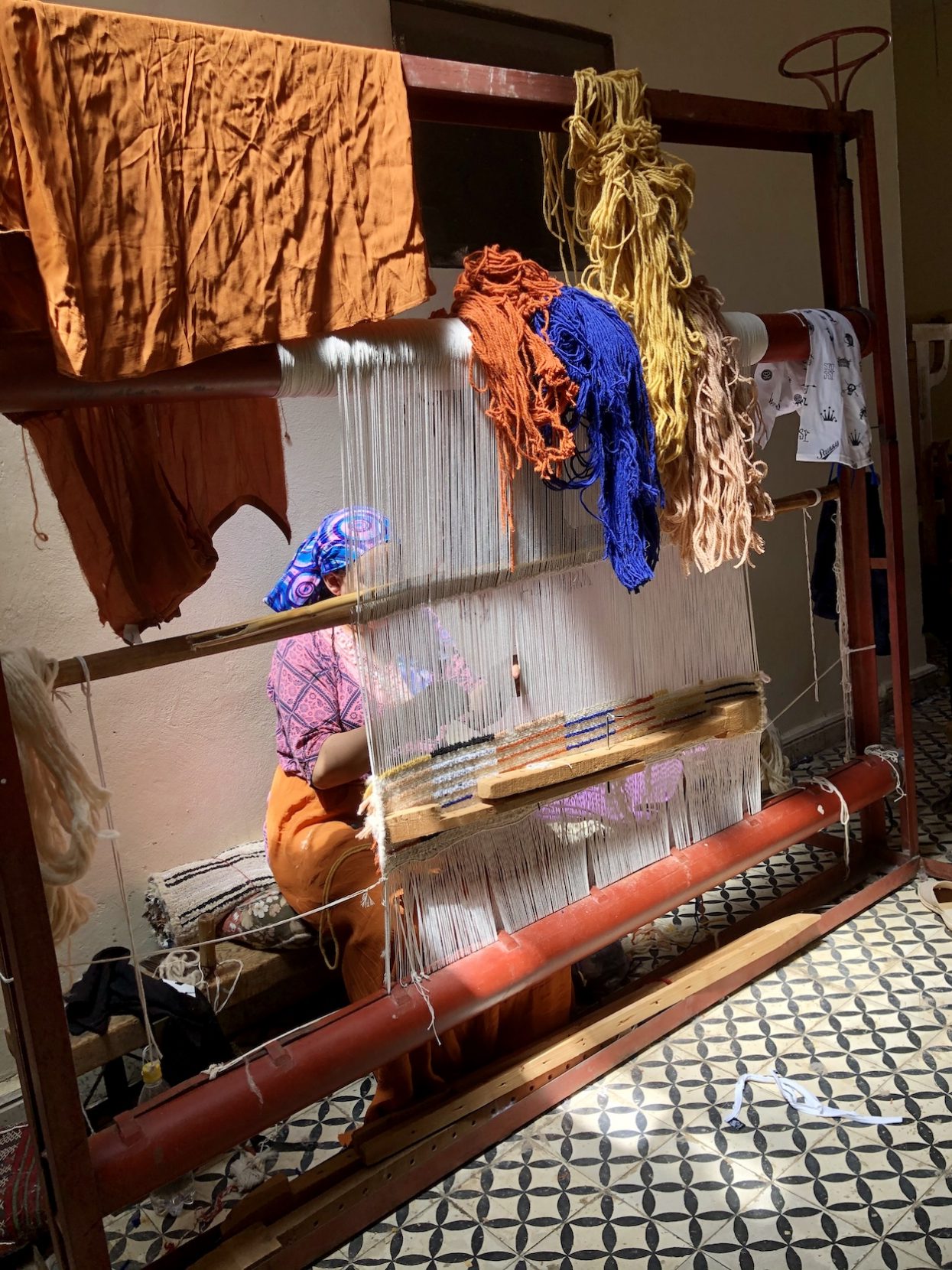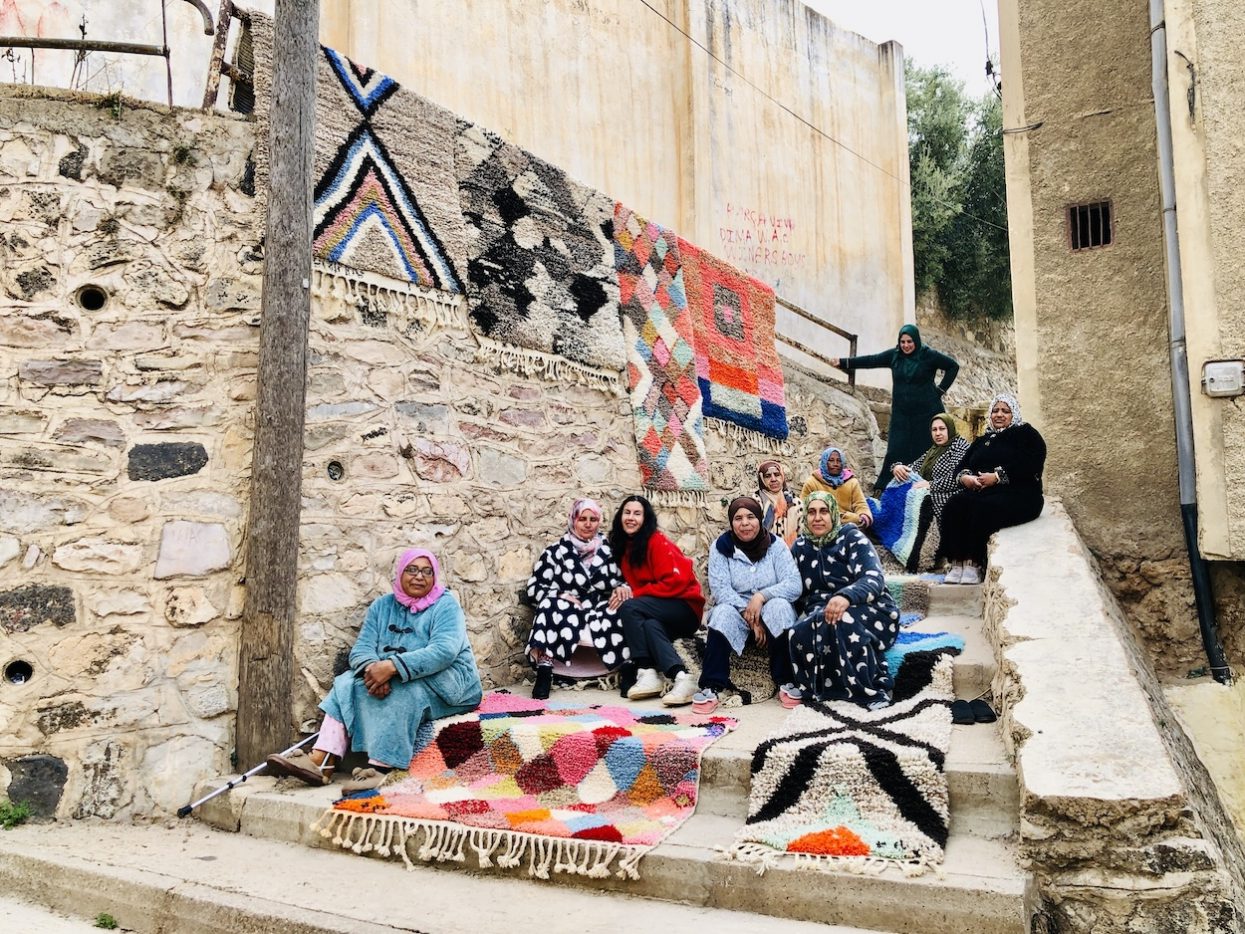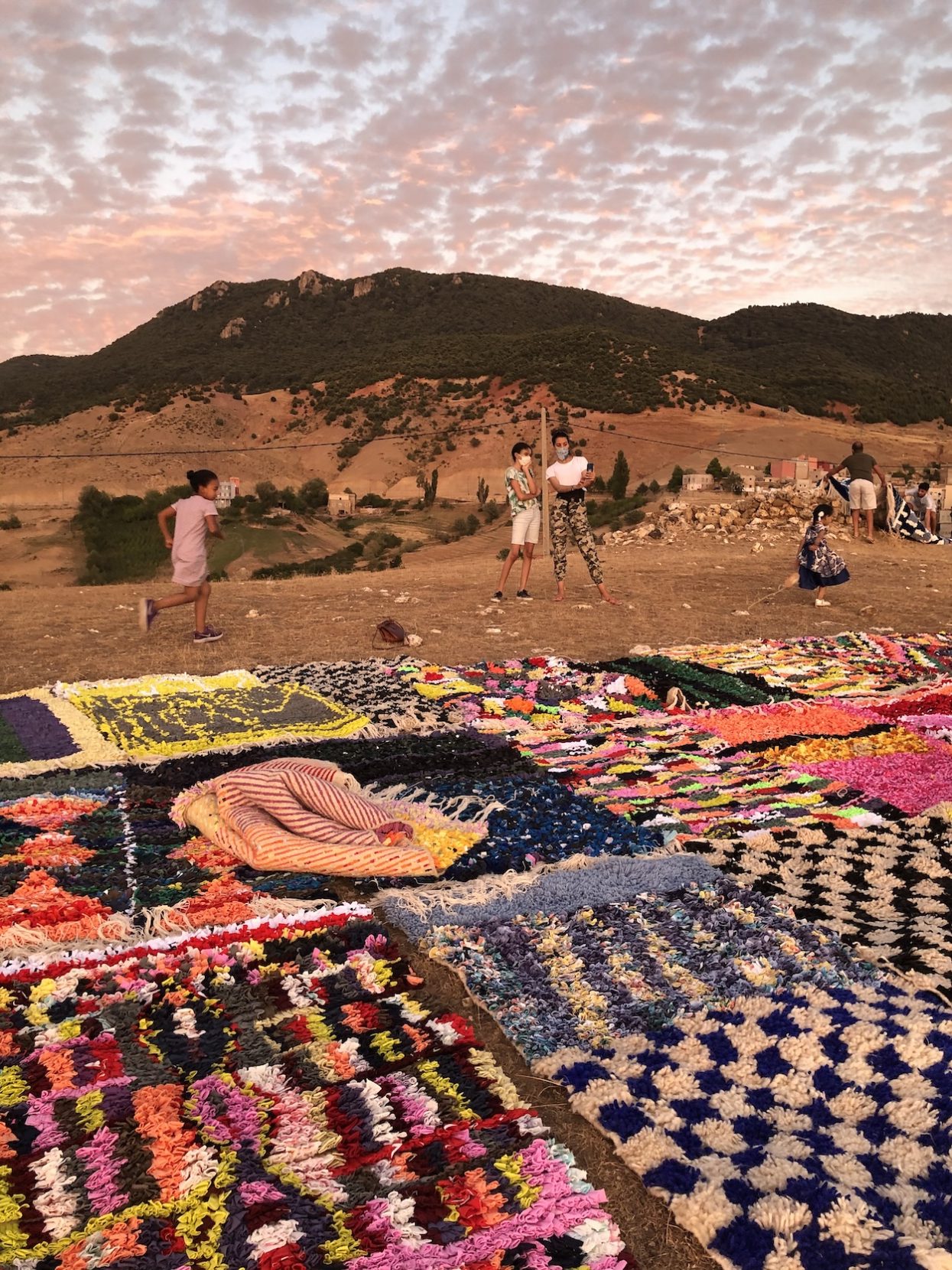Here, we ask designers to take a selfie and give us an inside look at their life.
Age: 50
Occupation: Creative director and textile designer.
Instagram: @artisanproject
Hometown: Tangier, Morocco.
Studio location: Tangier, Morocco.
Describe what you make: I design textiles and collaborate with Moroccan weavers to bring my vision, combined with their ancestral wisdom, to life. I’m passionate about sourcing natural fibers and using plant-based dyes. I also enjoy working with remnant fibers, incorporating them into Boucherouite carpets, which traditionally use discarded or unwanted materials.
The most important thing you’ve designed to date: The Shepherd’s Carpet and a series of four textile art pieces titled The Song of Yan for an exhibition called “The Majlis” at the Venice Architecture Biennale in 2021. This project, commissioned by the Caravane Earth Foundation, was a profound exploration of how art, craft, architecture, agriculture, and education contribute to sustainable change.
The Shepherd’s Carpet holds special significance for me as it embodies the relationship between all natural elements coming together in a sort of rebirth to create a unified entity. My years of living and working in Morocco, along with my journeys into the countryside, deeply influenced my understanding of how crucial every element is in the making of a carpet or textile. This experience taught me that our creativity is interconnected with the land and its people.
Designing the Shepherd’s Carpet and the textile art for “The Majlis” was a tribute to all the unseen forces that contribute to the creation of textiles. It’s a collective imagination brought to life, starting from the land, the shepherd, and his flock to the women who hand-wash and prepare the wool, and finally, the weaver at the loom. This project was a true representation of how every part of nature and every human hand involved plays an essential role in the creation of textile art.
Describe the problem your work solves: My work highlights the interconnectedness of creativity, nature, and human collaboration. It challenges the notion of individual ownership of creativity, emphasizing that artistic creation is a collective process influenced by the environment and community. It educates the public on the value of these elements in creating a more sustainable and interconnected world. Also, by working with local artisans, my work provides economic opportunities for the weavers as well as helping to preserve traditional weaving techniques and cultural heritage.
Describe the project you are working on now: My second upcycled carpet collaboration with Stüssy, which went on sale a couple of weeks ago. I designed and oversaw the production of more than 100 handmade Boucherouite carpets inspired by aerial landscapes, bodies of water, the intricacies of flora, as well as abstract art, and vintage Moroccan textiles. I’m working on a collection of textile art pieces that incorporate natural fibers such as wool, dwarf palm, and raffia, along with remnant fibers, in collaboration with a fourth-generation weaver in Tangier. It’s an in-depth exploration of texture, examining how different materials interact and contribute to the tactile and visual richness of the textiles.
I’m also custom designing a series of Shepherd’s Carpets, utilizing locally sourced plants like madder root and walnut leaves for dyeing. I employ a hand-dye technique to apply these natural colors, allowing me to control the depth of color and its placement on the carpets. The pattern of the carpet is dictated by the varieties of hand spun wool that are knotted in high piles to form the body of the carpet.
A new or forthcoming project we should know about: I’ve designed a carpet that’s an ode to my Palestinian heritage that I’m really excited about. I’m working alongside an incredible master weaver in her 70s based in the north of Morocco. This carpet will be released in July and a percentage will be donated to humanitarian relief organizations. I’m collaborating on a few other exciting projects that I can’t reveal just yet, but I can share that one of them involves a talented and renowned Australian artist and another is an upcycled carpet project for an American brand that will be released in 2025.
What you absolutely must have in your studio: Music that moves my soul, vintage textiles, art books, paints and crayons, and plenty of light!
What you do when you’re not working: I enjoy beach walks with my teenage daughters and our dog, savoring a good cup of coffee in the morning sunlight at my favorite local café, cooking for family and friends, listening to audiobooks while running errands around the city, and planning my next trip abroad.
Sources of creative envy: Palestinian poet Mahmoud Darwish, my grandmother’s tatreez (embroidery), French Art Deco architecture, Catalan artist Josep Grau-Garriga, Mother Nature.
The distraction you want to eliminate: Negative thoughts and street noise.
Concrete or marble? Marble.
High-rise or townhouse? Country house.
Remember or forget? Remember.
Aliens or ghosts? Aliens.
Dark or light? Light, light, light.
Images courtesy of Artisan Project. Portrait photography by Alima Manaar.








